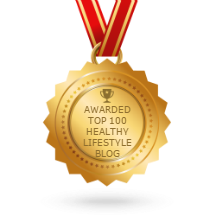7 Tips to Maintain Optimal Wellness at Work

Sitting all day long in an office chair can take a toll on your wellbeing, but with these tips, you can maintain optimal wellness even in the office…
1. Sit
Always start with adjusting your seat first- followed by the rest of your workstation. This is extremely important to set yourself up in the correct position. Raise or lower the seat to ensure your thighs are parallel to the floor with your feet flat on the ground or a footrest and maintain two inches of clearance between the back of your knees and the front edge of the seat for circulation. Raise or lower armrests to your rested elbow height. Your shoulders should be relaxed during use.
2. Typing
Position the typing surface about one inch below your rested elbow height, allowing your shoulders to be relaxed. Keep your wrists straight while typing. Rest your palm – not your wrists – on a palm support.
3. Your Mouse
Position your mouse close to the keyboard to minimize reaching. Avoid anchoring your wrist on the mousing surface. Instead, glide the heel of your palm over the mousing surface and use your entire arm to mouse
4. View
Position the monitor such that the top line of text is at or slightly below eye level. Tilt the monitor slightly away from you so your line of sight is about perpendicular to the monitor. Try to position your monitor closer to you. An arm’s length away is usually a good rule of thumb.
5. Move
To avoid health issues caused by long-term sitting, frequently shift postures throughout the day. Sit/stand workstations make it simple. Moving for as little as a few minutes every hour re-engages your metabolism, blood flow and can improve mobility. The key is the ability to move frequently, not just moving for an hour and then sitting for the rest of the day.
6. Light
Lower the overhead lighting in your office and use controllable task lights-Why? Monitors are best viewed in dimly lit settings because they emit light. Paper documents, however, reflect light and therefore require light in order to be viewed. Age is a factor as well. As we get older we need more contrast to view the same documents. The implementation of so called “dual-source” lighting will also lower your energy requirements.
7. Rest
Take two or three 30 to 60 second micro-breaks each hour to allow your body to recover from periods of repetitive stress.
(Credit: Humanscale Middle East; middleast@humanscale.com)








Quite an interesting read!
I am lucky enough not to work but to have a hobby that brings in a good income and makes me a very free person in many ways. I was inspired by forex success stories and after reading them I realised that I could also make money from trading.
From some point on, I am preparing to build my site while browsing various sites. It is now somewhat completed. If you are interested, please come to play with bitcoincasino !!
ICICI Bank DSA Registration is an easy and convenient way to become a part of the ICICI Bank family. With this registration, you can become an authorized representative of the bank and help customers in their financial needs. This ICICI Bank DSA Registration process is simple and straightforward, allowing you to quickly get started in your new career. With this registration, you can access a wide range of services offered by the bank and make sure that your customers are well taken care of.
The PM Kisan Samman Nidhi is a government scheme that provides financial support to eligible farmers across India. The scheme aims to supplement the financial needs of farmers and help them in procuring various inputs related to agriculture and allied activities as well as domestic needs. Under this scheme, eligible farmers receive Rs. 6,000 per year, which is paid in three equal instalments of Rs. 2,000 each.
If You are Looking for the best Ethiopian Food than you can click on the Link and Have all the new Details out here.
It’s a game. Five dollars is free. Try it It’s not an easy game ->-> 토토사이트.com